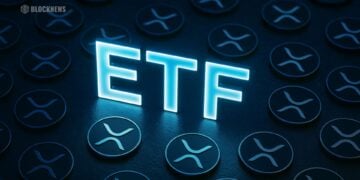- Sui is unlocking new Bitcoin DeFi options via sBTC, WBTC, and LBTC—giving BTC holders ways to earn and participate in DeFi without custodians.
- Competitors like Cardano, Solana, and Aptos are also building BTC utility tools, but Sui stands out by offering multiple trust models in one ecosystem.
- With native BTC development still tricky, BTCfi offers a middle ground—letting users actively deploy Bitcoin while keeping decentralization intact.
For years, Bitcoin’s been sitting on a throne—untouchable, decentralized, and pretty much just there as digital gold. But that narrative’s changing fast. It’s no longer just about holding. Welcome to BTCfi, where Bitcoin is stepping into the world of decentralized finance. And weirdly enough, it’s not happening on Bitcoin alone. Sui, along with chains like Solana, Aptos, and Cardano, is leading the charge to make Bitcoin useful—not just valuable.
Adeniyi Abiodun, co-founder of Mysten Labs (the team behind Sui), said it plainly: Bitcoin’s great as a store of value, sure—but it hasn’t done much else. That’s changing. Sui now lets BTC holders go beyond just sitting on their coins by opening up access to DeFi tools, staking, and yield strategies. And yes, it’s finally getting interesting.
Breaking Down BTCfi on Sui
Sui’s BTC-powered ecosystem includes a few flavors. First up: Wrapped Bitcoin (WBTC), which is basically Bitcoin on Ethereum, now bridged over to Sui. It’s the fast lane to DeFi apps like Bluefin or Suilend. While not perfect (custodians, centralization—you know the drill), it’s proven and liquid. Then there’s LBTC, by Lombard Finance, which lets folks mint overcollateralized BTC-based assets to earn yield in fixed-income products.
And then there’s sBTC via integration with Stacks—a Bitcoin layer-2. sBTC isn’t like WBTC. It doesn’t rely on custodians but instead on a decentralized group of signers that approve mints and burns. So, it sticks to Bitcoin’s decentralized values while letting holders earn rewards, stake, and trade across the Sui DeFi scene. According to Abiodun, over 10% of Sui’s TVL comes from Bitcoin assets—proof that demand is growing for Bitcoin to actually dosomething.
Other Chains Want In Too
Sui’s not alone. Cardano’s got its BitcoinOS demo, enabling bridgeless BTC transfers to Cardano smart contracts. It uses EUTXO magic to let BTC holders lend or stake without using cross-chain bridges. It’s still early—but it’s real. Solana has WBTC via Ethereum bridges, integrated across DEXes like Orca and Jupiter. Problem? Bitcoin liquidity on Solana is still pretty thin.
Aptos is making noise too. Like Sui, it’s built with the Move language. Its DeFi scene includes xBTC from OKX, with trustless bridging via B² Network. Platforms like Aries Markets are building around these assets for lending, swapping, and staking.
Why It Matters
Here’s the catch: Bitcoin itself is hard to build on. It’s not made for smart contracts, and even with upgrades like Ordinals or BitVM, development is clunky. So Sui’s goal is to extend Bitcoin’s usefulness—without needing to change Bitcoin itself.
BTCfi lets people do more with their BTC: earn yield, stake, trade—without compromising on decentralization. Sui’s also teaming up with Bitlayer to launch the first trust-minimized BitVM bridge. More integrations are coming, and according to Abiodun, expanding BTCfi is a “strategic priority” for Sui in 2025.














